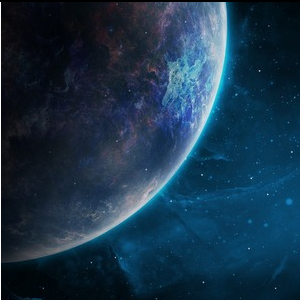Scientists of Samara National Research University determined the constants that will come in handy when analyzing the radiation coming from potentially habitable exoplanets. These findings are presented in the article "Rate constants for collision-induced emission of O2(a1Δg) with He, Ne, Ar, Kr, N2, CO2 and SF6 as collisional partners", published in the journal
"Physical Chemistry Chemical Physics". This paper aroused the wide interest of the scientific community. The editorial board of "Physical Chemistry Chemical Physics"
included it among the hot articles of 2018.
The attention caused to the experiment results of a team of scientists from Samara University, LPI Branch in Samara and Florida International University is due to the fact that they allow monitoring of electronically excited oxygen in the singlet state. "Singlet oxygen is a unique molecule, — said one of the authors of the study, Professor at the Department of Physics of Samara University Valery Azyazov. — It has an enormous radiative lifetime — 74 minutes — while most of the excited molecules and atoms exist for milli and micro seconds. For this reason, the number of photons emanating from singlet oxygen is extremely small, that is why the molecule glows faintly. Because of this, it is poorly susceptible to research even by highly sensitive detectors. In addition, collisions with surrounding molecules induce a radiative transition in singlet oxygen, which also complicates its monitoring in various environments". The increased attention to the studied molecule is explained by the fact that it plays an important role in chemical and energy exchange processes occurring not only in the atmospheres of the planets, but also in electric discharge systems, in active media of oxygen-iodine lasers, in combustion zones, in biological substances. This molecule can be used as an indicator shows whether there is oxygen, and therefore life one or another exoplanet. However, for this purpose it is necessary to know its radiation constants, which have been identified by the scientists in the course of experimental work in the laboratories of Samara University. "We used a sensitive photomultiplier tube for the IR range, laser systems and, of course, our own method for measuring the rate constants for collision-induced emission of oxygen with collision partners — helium, neon, argon, krypton, nitrogen, carbon dioxide and SF6 gas, — said Valery Azyazov. — This allowed us to determine the desired constants with high accuracy. The obtained data are necessary not only to identify the role of singlet oxygen in the cells of living organisms, but also to determine the percentage ratio of oxygen content in exoplanet atmospheres analyzing of O2 emission/absorption spectra".
Today, scientists all over the world are just beginning to study the atmospheres and other characteristics of exoplanets discovered. According to the open data, at the beginning of 2019, 3976 exoplanets were identified in 2971 planetary systems. The constants found will allow astronomers from around the world to record the oxygen in the atmospheres of exoplanets and to detect whether their conditions are similar to life on the Earth. "The oxygen emission rate constants given by us in the publication greatly facilitate the task of searching and determining the saturation of a living cell or atmosphere of the terrestrial planets with the singlet oxygen, — the professor concluded. — Therefore, this publication has aroused great interest of the scientific community".
For reference:
Singlet oxygen is a metastable state of molecular oxygen O2 with an excitation energy of about 1 eV.
Authors of the study:
A team of scientists from Samara University (Valery Azyazov, Andrey Pershin, Alexey Torbin), LPI Branch in Samara (Marsel Zagidullin, Pavel Mikheev), Florida International University (Alexander Mebel).
This work was supported by the Megagrant of the Government of the Russian Federation (Grant No. 14.Y26.31.0020).
Physical Chemistry Chemical Physics is a scientific journal that publishes research and review articles on aspects of physical chemistry, chemical physics, and biophysical chemistry. The journal has been indexed in Scopus since 1999. According to the Scimago Journal Rank, the journal has the highest quartile Q1 in all scientific areas defined in the database: Physical and Theoretical Chemistry, Physics and Astronomy. According to the Journal Citation Reports, in 2017, the impact factor (IF) of the journal was 3.906. In terms of citation levels, the journal has quartile Q1 in the areas of Physics, Atomic, Molecular & Chemical.
